By default, Windows 10 doesn't show hidden folders and files. If a file or a folder has the "hidden" attribute, it won't be visible in File Explorer. You can use this feature to hide the desired item quickly. Here is how you can see folders and files that you have already hidden in Windows 10.
Advertisеment
When they are visible, the icons of hidden files and folders appear dimmed in Explorer, so you can quickly tell that have the hidden attribute set.
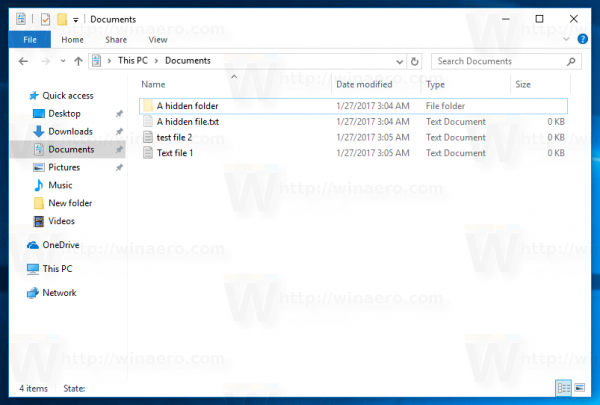
To show hidden files in Windows 10, do the following.
Open File Explorer. You do not need to open any specific location. However, if you know a folder which contains hidden files, then open it.
In the Ribbon user interface of Explorer, go to the View tab.
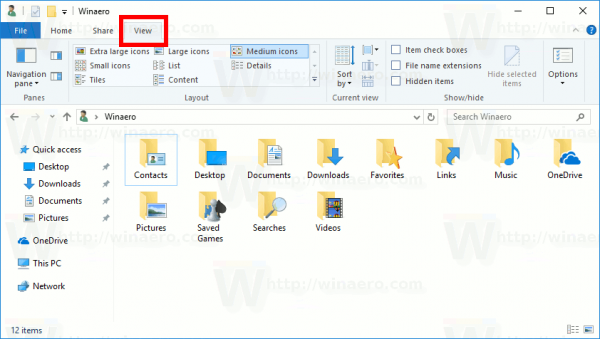
There, tick the Hidden items checkbox. Hidden files will now show in the File Explorer window. Notice how they appear faded (which is also how they appear when you cut them) because they have the hidden attribute:
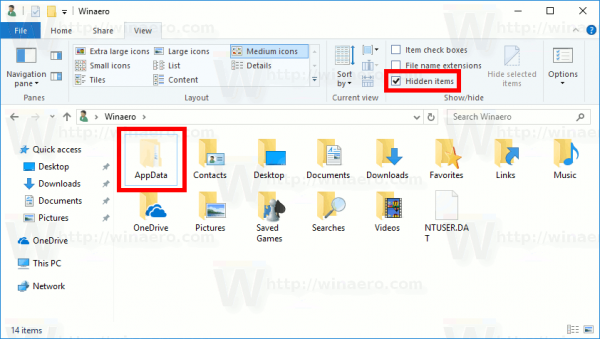
Alternatively, the same option can be enabled using Folder and search options. It is useful if you have disabled the Ribbon in File Explorer.
Open Control Panel and go to Appearance and Personalization -> File Explorer Options (called Folder Options before Windows 10).
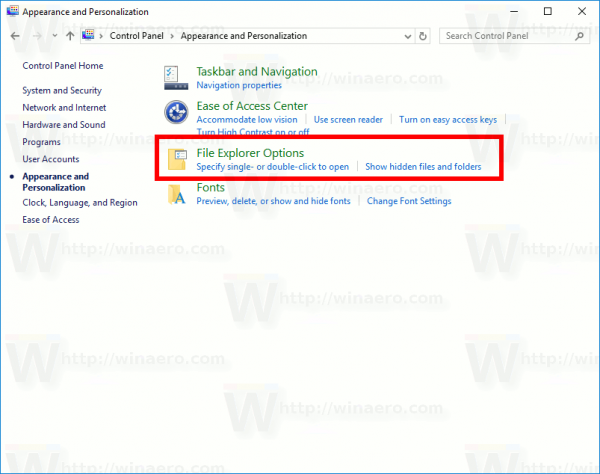
Or you can also open File Explorer. If the Ribbon is enabled, click File -> Change folder and search options. If you have disabled the Ribbon using a tool like Winaero Ribbon Disabler, press F10 -> click Tools menu - Folder Options.
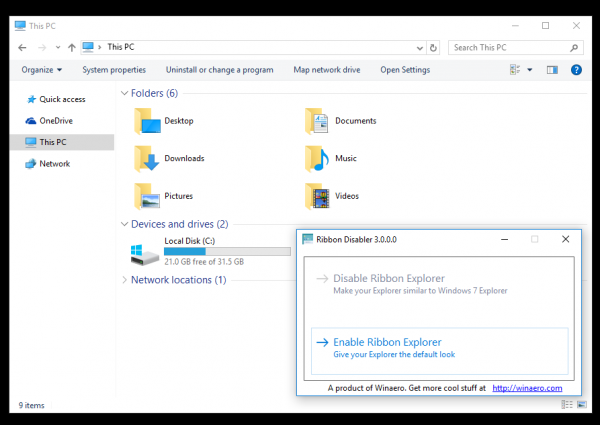
Switch to the View tab, and enable the option "Show hidden files, folders, and drives".
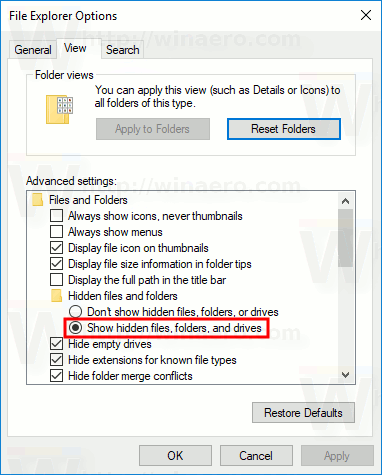
This dialog has one more option to show hidden files with system attribute. If you untick the option "Hide protected operating system files", then you will see system files in File Explorer which are also hidden.
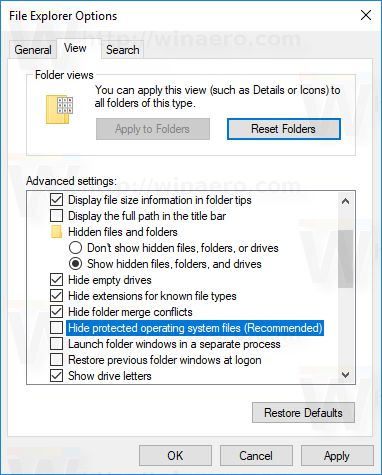
We do not recommend that you change or delete these operating system files unless you know what you are doing, so it's better to not leave to option checked. Also, these system hidden files will only show up when the option to show regular hidden files is enabled.
Also, note that the instructions in this article are applicable only to the current user account that you are logged in to. It won't change the visibility of hidden files and folders for other users.
These GUI options can also be tweaked in the Registry. Open the Registry Editor app and go to the following Registry key:
HKEY_CURRENT_USER\SOFTWARE\Microsoft\Windows\CurrentVersion\Explorer\Advanced
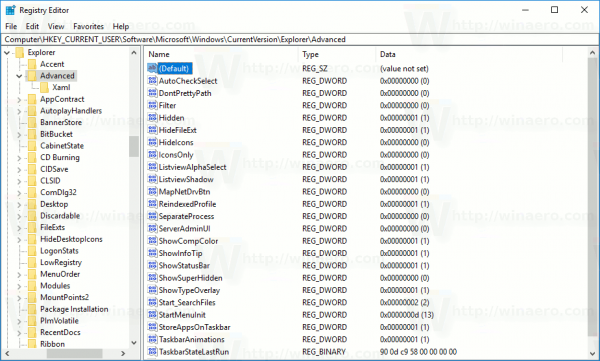
There, create a 32-bit DWORD value called Hidden. If this value already exists, then just change its value data to 1 (Enable hidden files). Even if you are running a 64-bit version of Windows, you still need to create the 32-bit DWORD value. Then, you need to restart the Explorer shell or sign out and sign in again to your user account. This will make hidden files visible.
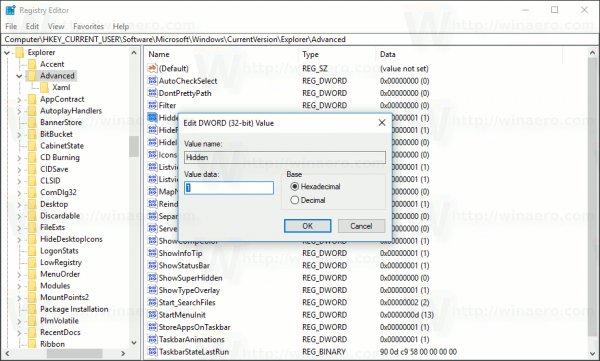
To show protected operating system files in File Explorer, create a 32-bit DWORD value named ShowSuperHidden. If this value already exists, change its value data to 1 (Enabled) as 0 means disabled.
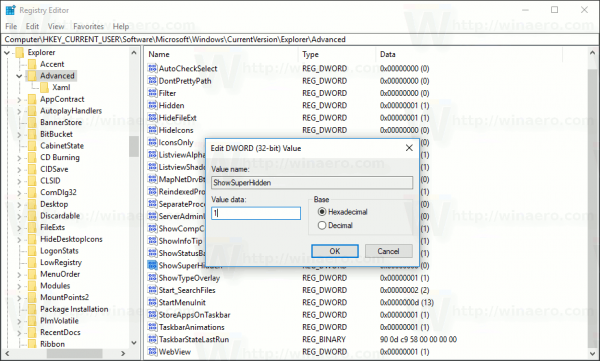
If you are working with hidden files frequently, you might find it useful to toggle them directly from the context menu. The context menu tweak is useful for unhiding items on the Desktop too. See how it can be done here:
Toggle Hidden Items Context Menu in Windows 10
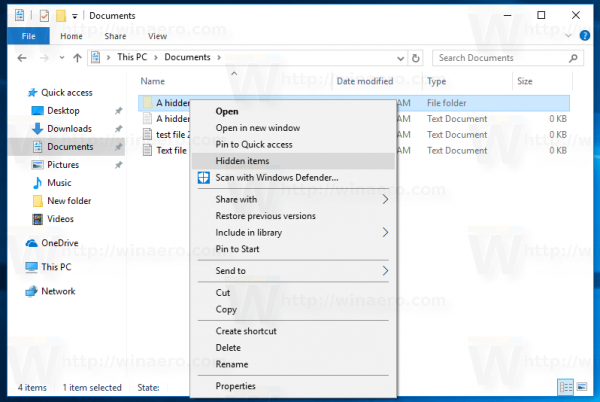
Also, you can hide selected files with a special context menu command. See how to add it:
Add Hide Selected Items to Context Menu in Windows 10
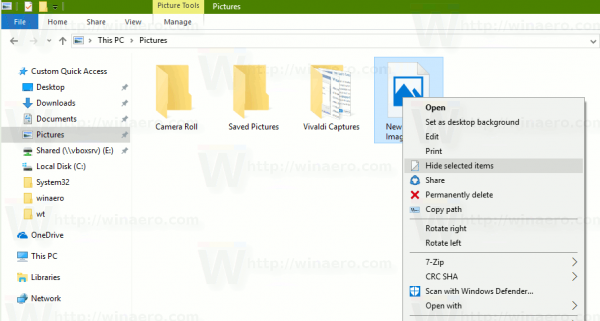
That's it.
Support us
Winaero greatly relies on your support. You can help the site keep bringing you interesting and useful content and software by using these options:
